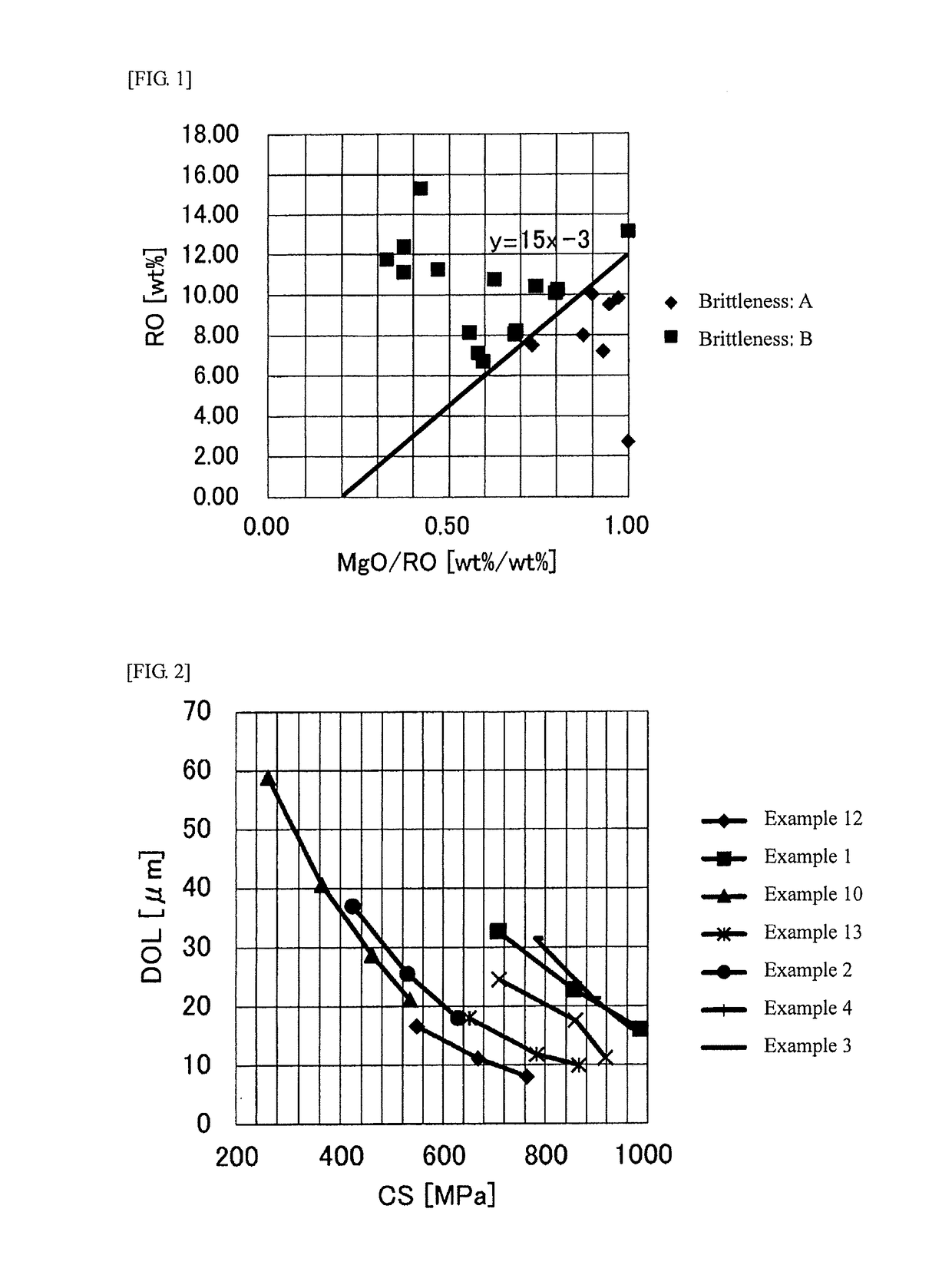Glass and chemically toughened glass using same
a technology of glass and chemically toughened glass, applied in the field of glass, can solve the problems of high brittleness of glass, and high probability of accidental drop by users during use or during carrying, and achieve the effects of low brittleness, excellent meltability, and high productivity
- Summary
- Abstract
- Description
- Claims
- Application Information
AI Technical Summary
Benefits of technology
Problems solved by technology
Method used
Image
Examples
example
[0090]The present invention is described below in more detail with reference to Examples. The present invention, however, is not limited thereto. Examples 1 to 9 represent inventive examples. Examples 10 to 26 represent comparative examples. Example 12 represents a common soda lime silicate glass.
[0091]In Examples 1 to 26, commonly used raw glass materials such as oxides, hydroxides, carbonates, or nitrates were appropriately selected to make compositions in the mass percentages shown for each component from SiO2 to K2O, and were weighed to make a 900-g glass. The raw material mixture was then placed in a platinum crucible, fed to a resistance heating electric furnace at 1,600° C., and melted for 4 hours to degas and homogenize the glass.
[0092]The molten glass obtained was poured into a mold, and maintained at a temperature of Tg+30° C. for 1 hour, followed by cooling to room temperature at a rate of 1° C. / min to obtain a glass block. The glass block was cut and ground, and finally ...
PUM
| Property | Measurement | Unit |
|---|---|---|
| temperature T2 | aaaaa | aaaaa |
| glass viscosity | aaaaa | aaaaa |
| temperature T2 | aaaaa | aaaaa |
Abstract
Description
Claims
Application Information
 Login to View More
Login to View More - R&D
- Intellectual Property
- Life Sciences
- Materials
- Tech Scout
- Unparalleled Data Quality
- Higher Quality Content
- 60% Fewer Hallucinations
Browse by: Latest US Patents, China's latest patents, Technical Efficacy Thesaurus, Application Domain, Technology Topic, Popular Technical Reports.
© 2025 PatSnap. All rights reserved.Legal|Privacy policy|Modern Slavery Act Transparency Statement|Sitemap|About US| Contact US: help@patsnap.com

